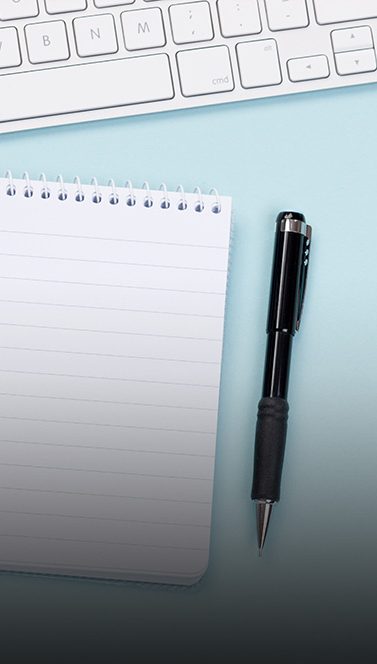learn how to use the hyphen, en dash and em dash
- 05.01.20
- 2 Min Read
Little details matter. We hear it all the time—especially in advertising. You wouldn’t want customers calling 555-1865 instead of 555-1856. Or can you imagine the frustration of someone trying to capitalize on a promotion they believed was valid from April–July only to learn the actual expiration was in June? The one letter between Jul. and Jun. can make all the difference, especially if free t-shirts are involved.
But then again, this is something we’re all well aware of. A lesser known topic, and one that truly eagle-eyed proofreaders may have spotted in the paragraph above, is the fact that a simple dash is never just a simple dash. Go ahead, look again. You’ll notice in the short time you’ve been reading that you’ve already encountered the hyphen, en dash and em dash. These three little lines have specific rules of usage, and yet most people don’t even know there’s a difference.
So, what are these differences, and why should you care? It all goes back to those small details. When representing your brand in the public eye, you want to ensure you’re putting your best foot forward and providing the same amount of care and consideration for your image as you would offer your own customers. At L&S we sweat these details and are here to give you some basics to distinguish between -, –, and —.
THE HYPHEN (-)
The most well-known and utilized form of a dash is the hyphen. This mark is what is automatically generated when you hit the dash-key on your keyboard. The hyphen is the shortest version of a dash and is used to combine two things to help the reader make sense of something.
When displaying a phone number, the hyphen is the traditional mark one would use to combine the full string of numbers:
Dial 605-338-8000 For All Your Advertising Needs.
You would also use a hyphen to join multiple words that go together in a sentence:
All services are performed by a top-notch team of certified employees.
A scenic drive is a well-earned escape from your day-to-day routine.
THE EN DASH (–)
Next up on this dashing list of dashes is the en dash. This is the middle-sized dash, and its name is derived from the fact that it’s traditionally the same length as the capital letter N is wide in your given typeface. Using the en dash requires slightly more effort than the hyphen as there is no dedicated key on the keyboard, but it can be as easy as typing a capital letter. On a Mac you can simply press Option and the dash-key together to insert an en dash. For PC users, press and hold ALT, type 0150 on the keypad, then release the ALT key to create an en dash.
The en dash is used to represent a range of something:
Offer valid Monday–Friday
Ski Resort open Nov.–Mar.
THE EM DASH (—)
Last—but not least—is the em dash. As you may have surmised, the em dash is the longest of the dashes. As with the en dash, the em dash gets its moniker from its length being proportional to the width of the capital letter M in your typeface. When using the em dash, the choice to add spaces or not around the dash itself is up to personal preference. However, it is recommended that your brand select a single format-of-preference and adhere to that format for brand consistency. For Mac users, the em dash is created by hitting Shift + Option + dash-key. PC users can access the em dash by holding ALT and typing 0151 on the keypad.
This mark can be used in place of parentheses, commas, colons or semicolons for added emphasis in copy:
Our online classes offer everything you need—all on your schedule.
Technology to Fit Your Needs—and Budget.
Since the em dash can be used to add emphasis, it’s recommended that it be used sparingly. Overuse of the em dash in longer blocks of copy—while tempting—can be visually overwhelming—and unnecessary. See what I mean?
So there you have it, some basic rules for using the correct variety of dashes in your advertising. It’s a little thing, but these little things are what help keep your brand image looking the best that it possibly can. Fair warning, now that you’re in-the-know, it’s highly likely that you’ll start to notice these dashes everywhere.






